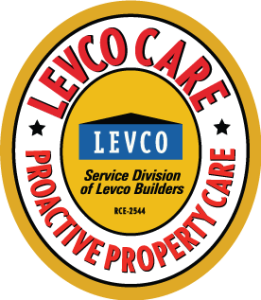
Estimated reading time: 3 minutes, 29 seconds

I recently was asked to look at a new development in the summer of a home we recently remodeled. The concern is that it is in the ‘mid to high ’80’s and the house is humid.
- OUTSIDE HEAT mid to high ’90s
- INSIDE SET TO: 73deg
- UPON ARRIVAL: House is 70 deg AC not running. Fan in auto
- Humidity inside 44%
- Humidity outside 36%
Background information
The AC unit was replaced 4 years ago with a 3 ton coil (Inside) 2.5 ton compressor (Outside). We added 650SF to a 1500 SF home and a new furnace that was installed above the coil so it is a down draft forced air system. After further questioning, the client noticed the issue had just been in the last couple of weeks. Otherwise everything is working well through some over 100 degree days in a row.
My Hypothesis
The addition to the home is very well insulated and tight. The windows were all closed. The AC (which is a dehumidifier) was not running. I think that they have not been using the exhaust fans as much as they could have and the windows need to be opened occasionally to get some fresh air into the home. The AC has not been calling for cooling so it has not had a chance to decrease the humidity. We create a lot of humidity by living indoors, breathing, bathing, boiling , cooking, etc. If there s no way to get it out it will feel muggy in the home.
Recommendation:
- Use bathroom and cooking exhaust fans more.
- Open the windows at night.
- Air out the home.
My HVAC Buddy’s Hypothesis
For some reason in Idaho most homes have a mismatched coil and condensing unit. IMHO AC works best when the Coil and the compressor are rated the same tonnage. An undersized compressor runs longer and harder. If you have the correct match the compressor will run easier the coil will be colder and more humidity will come out of the air. Conventional wisdom says to pair the units.
MANUAL – J
In 1986 the ACCA Air Conditioning Contractors of America started recommending the size of Air conditioners. The felt that by imputing the load demands that they could right size the unit. HVAC contractors used to use their best judgement, overnight that became a thing of the past. Mechanical Engineers now have to plug all your homes vital statistics in and the correct size system will be pooped out in a Manual-J.
There is also a Manual-D for ducting. A Manual-S for equipment selection, and a Manual-T for air distribution that comes with the Manual-J. HVAC contractors are obligated to follow the rules. Sometimes they get it wrong. Typically I see undersized units. Customer comfort and common sense need to play a part. Having a savvy Mechanical engineer and or a wise HVAC contractor can catch errors and nip them in the bud.
Results
I felt the overflow drain condensate tube, not much air was coming out of it. I blew on the condensation line which was a natural flow out of the home. It burbled for a moment then the water started to flow. Then I noticed that there was far more volume of air coming out of both the overflow and the “T” in the condensation line. We taped up the overflow with a piece of tape (with a slit in it) and the condensation line “T” completely so there would be more pressure helping the water to evacuate the home. The condensation line was not initially dripping but once I blew on it, the water started flowing again.
Your comments are welcome. To ask questions or get more information about fixing stuff, click here to email me directly, or call 208-639-1808
I do these things during non-Levco time to be sure it doesn’t interfere with the Remodeling business. Repairing things and understanding homes is just another passion of mine.
or visit our contact page.


Leave a Reply